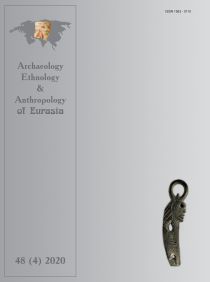
|
Archaeology, Ethnology & Anthropology
of Eurasia
48 (4) 2020
DOI: 10.17746/1563-0110.2020.48.4.116-124
|
Annotation:
Descendants of Eleudei: The Problem of Oirat-Buryat Ethnic Contacts
B.Z. Nanzatov
Kalmyk Research Center, Russian Academy of Sciences, I.K. Ilishkina 8, Elista, 358000, Russia
Eleuths (Olots) played an important part in the ethnic history of the Mongol peoples of Inner Asia, in particular of the Oirats, being the dominant group of the Oirat union at the early stages of its history. In this study, an attempt was made to fill in one of the gaps in the ethnic history of the Turko-Mongol peoples, using the ethnonym “Olot”. The major limitation in studying the Oirat ethnic history is the insufficiency of sources. Much can be gained from using Buryat and Sakha (Yakut) folklore, specifically epics, genealogical legends, and tales. The reason is that the Olots, according to one of the hypotheses, took part in the formation of those peoples. This idea is supported by the reconstruction of protoforms of certain Buryat and Yakut ethnonyms and eponyms. Their comparative and historical analysis indicates ethnic ties between the Buryats and the Yakuts, and their participation in the ethnic history of the Mongolian stratum. These facts open up a wider perspective on Turko-Mongol ties. The Olot ethnic history shows them to have been distributed across vast territories of Inner Asia and Siberia, eventually becoming a component of various Turkic and Mongolian groups, while preserving their identity and featuring prominently in ethnogonic legends not only of Dorben-Oirats, but of the Buryats and Yakuts as well. The findings of this study attest to the complexity of ethnic processes among the Mongolian and Turkic speaking nomads of Eurasia. Also, they contribute to the understanding of the ethnic composition of Mongolia, Buryatia, and Yakutia, thus widening the scope of studies on the Altai.
Keywords: Inner Asia, Turko-Mongol peoples, ethnogenesis, phonetic reconstruction, ethnonyms